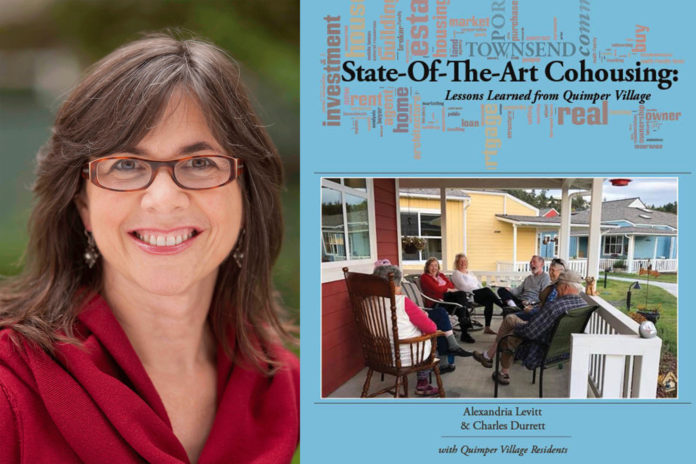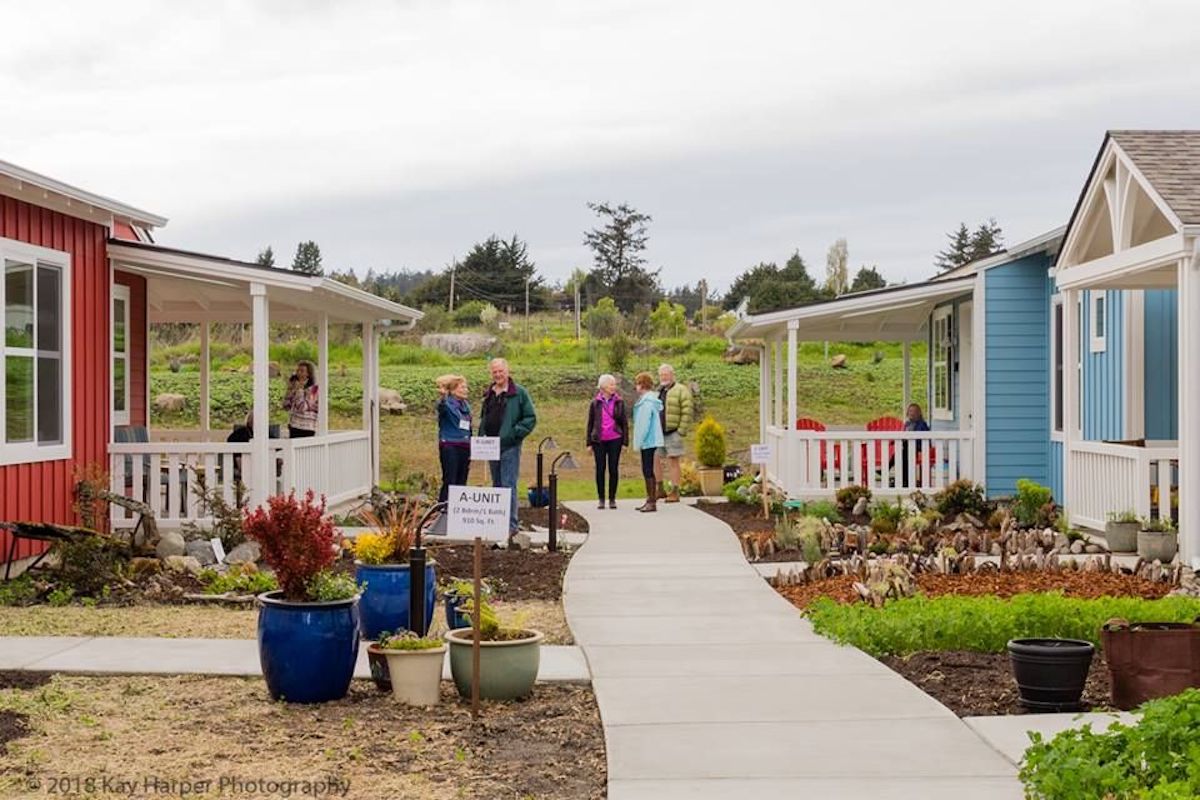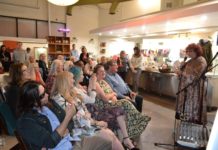
Current studies, according to South Pasadena author Alexandria Levitt, show that isolation and loneliness can lead to adverse health consequences.
“So, finding a way to live that promotes happiness, mental health and real autonomy is more important than ever,” stressed Levitt, who co-wrote “State-Of-The-Art Cohousing: Lessons Learned from Quimper Village” with Charles Durrett. “Few of today’s adults would be satisfied with the limited options that were available for senior living to our parents’ generation. That is why we must explore better alternatives now, and I think cohousing is one of those alternatives.”
The principle behind cohousing, explained Levitt, is the recognition that most people would prefer and are happier to stay in their own homes as long as possible. At the same time, she added, most feel better when they are connected to others. Levitt says cohousing, which may include a common dining area, kitchen laundry, and recreational areas, is the best of both worlds.
“Originally created in Denmark, cohousing is an intentional community of private homes whose owners cooperatively own and use outdoor spaces around the homes, and commonly owned indoor spaces,” explained Levitt. “Cohousing members manage their communities together and actively come together to learn, support each other, and enjoy life, but it’s important to stress that everyone has their own apartment or cottage. Privacy matters. Groups decide to have dinner together several times a week and take turns cooking for each other and in many other ways collaborate and contribute. It isn’t a commune. There is no joint economy. It’s really a great independent and active way for people to get older and to not just live in community but engage in it.”

Though cohousing, households maintain private lives and independent incomes but take part in community activities, meetings, gather for shared meals, parties, movies and other neighborly events. Forming clubs, organizing child and elder care or carpooling are all made easier.
“Cohousing for adults 55-plus has proven to be an innovative and cost-effective model that illustrates how living in a highly functional neighborhood improves health, reduces the need for senior services, enhances individual contributions on a larger scale, and makes life more affordable and fun,” said Levitt.
Several years ago, she met the residents of Quimper Village during a weekend conference, in what Levitt described as “a remarkable cohousing project in Port Townsend, Washington.”

Resident shared the story of their journey and the positives of a cohousing lifestyle.
After it was over, Levitt told Durrett, the architect of Quimper Village, what she heard would make an excellent book. “We used their initial narrative, conducted interviews with many residents and used our experience as well to paint a portrait of this project,” said the local writer. “My favorite part, of course, was interviewing them and visiting Quimper Village, eating meals together and seeing their neighborhood thrive. I’d love to live in such a place. It really radiates warmth and a sense of purpose and real caring for each other.”
Along with being an architect and author, Durrett is an advocate of affordable and socially responsible design as a major force behind more than 50 cohousing communities in North America. He is also the author of “The Senior Cohousing Handbook: A Community Approach to Independent Living,” and the co-author of “Creating Cohousing: Building Sustainable Communities.”
Levitt has an accomplished background herself, as a gerontologist –the study of aging. “I am most interested in progressive models of housing for older adults,” she said. “Ultimately, I want to develop housing for people that does not just show off a ‘lifestyle’ imagined by corporate developers but one that reinforces the qualities that help us most as we get older – friendship, community and purpose, as initially created in cohousing in Denmark. Cohousing is an intentionally designed community with tremendous benefits for those who live there.”
A South Pasadena resident since 1996, she and her husband moved to the city for its highly regarded schools after they had their first child. She was a Girl Scout leader for 13 years, a PTA president at Marengo Elementary School for two years and for the past six years has been a member of the city’s Senior Citizen Commission while serving as both chair and vice-chair in the past.
She hopes the book, available on Amazon, will act as a tool to move others in taking a hard look at cohousing. “I am very familiar with the many challenges facing us as we get older and the remarkable connection between health (both mental and physical) and social engagement,” Levitt said. “I lead workshops on ‘Aging and Thriving with Cohousing’ and informational presentations on cohousing for adults 55-plus.”
This book, added Levitt, is “really about the strength we have when we work together,” pointing the old saying: “If you want to go fast, go alone. If you want to go far, go together.”
She says “State-Of-the-Art Cohousing” is “a wonderful illustration of that philosophy,” insisting, “by coming together, pooling their skills, listening and building on strengths, the members of Quimper Village created something amazing. Certainly, in a time of crisis such as we are in now, working with, and helping others is key to not only our survival but to our ability to thrive and flourish.”
In a way, noted Levitt, the story of how Quimper Village, the state-of-the-art senior cohousing community in Port Townsend, Washington, was created, designed, and built, isn’t much different than college life, for those wanting to make a comparison. “You made decisions together, you ate together, you always had someone to do things with,” she said. “Cohousing isn’t so different. This book shows how one group of inspired and determined folks made it happen for them.”
Now that “State-Of-The-Art Cohousing” has been published, Levitt’s goal is to move the needle in the creation of cost effective, appealing, environmentally friendly housing that can be home for active, engaged older adults. “Currently in Southern California, we have no cohousing of any kind, not intergenerational or older adult,” she said. “I’d really like to see that change, and I hope some of you do too.”
To learn more about cohousing, go to Cohousing.org or Levittcoho.com




















.png)









